Bravely Default II is Square Enix’s attempt at another entry to the series game after their previous one, Bravely Second: End Layer did not live up to fans’ expectations as a sequel to the first one. The sequel is a strong follow up to the series, and while there are hiccups in the game, the experience was overall great. Here is a review of Bravely Default II.
The Job system is present, allowing you to change Jobs (classes) outside of battle, assigning each character to different roles they will play in battle. The classic White and Black Mages return, as well as some from other games with new ones to accommodate.
Graphics
Let’s get the graphics out of the way. While the graphics follow after the 3DS games, portraying the characters in a chibi style, the game still looks wonderful.
The characters are all portrayed well and the emotions they go through are clear through the animations and performances. The combat nd gameplay aren’t negatively affected by the art style.
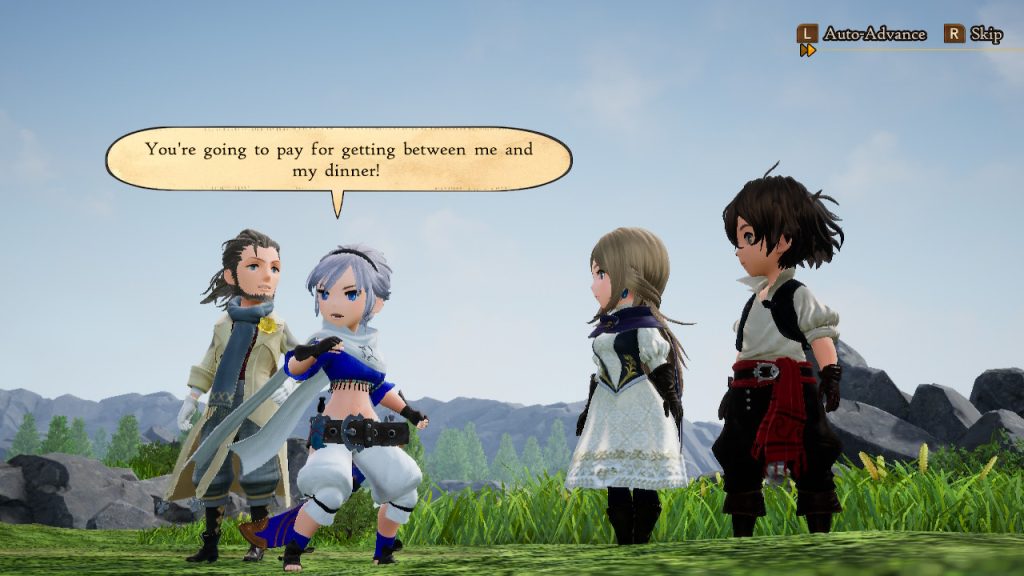
It really all comes down to personal preferences. Many hate the chibi style, but personally, it doesn’t take away from the experience at all. The graphics of Bravely Default II aren’t anywhere near a deal breaker, and the art style still works with what the game is presenting.
Story
Despite the title, Bravely Default II is not a direct sequel to Bravely Default, the first game in the series, or Bravely Second: End Layer, the second game in the series. While it heavily borrows many gameplay elements, such as the job system and the titular Brave/Default system, it boasts a different story unrelated to the prior games.
However, Bravely Default II’s story structure and premise is very similar as the first game: the four heroes, dubbed “The Heroes of Light,” must utilize the four elemental crystals–wind, water, earth, and fire–in order to save the world.

The story isn’t anything amazing, but I personally preferred it over Bravely Default. My only issue with the story of the first Bravely Default is its repetitiveness in the later chapters.
Bravely Default II’s story isn’t as repetitive, but it’s also nothing special. There were only two or three moments where plot development actually surprised me, and I actually enjoyed what they did in the last few chapters and they played around with the multiple endings.
I did like the characters in this game, and was what had me invested in as opposed to the story. I found the protagonists–Seth , Gloria, Elvis, and Adelle–charming; I even actually took the time to read all of the Memories, as I enjoy the small moments of character interactions in them.
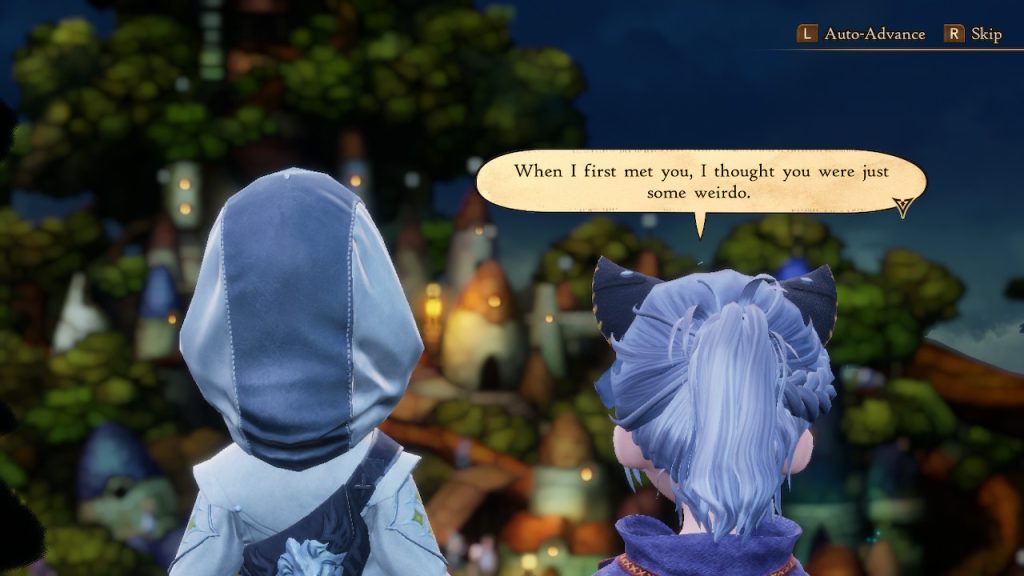
Even all the other characters they encounter in their journey were quite appealing to me. I’m glad that the Asterisk holders aren’t killed (mostly) in order to obtain their Jobs, as we are able to see them get some use in the plot later on or during side quests.
Overall, Bravely Default II’s story is pretty average with an interesting cast of characters. While it isn’t deep and overly engaging like some of Square Enix’s other games, it still gets a pass. Personally, I found the true ending worth it simply because of how endearing these characters were.
Music
Before moving onto the gameplay, I’d like to talk about the music because it is amazing. Every track is just so well composed and fits so well that it is easily one of the highest points of the game.
It’s easy to see why the music for the game is great. For those unaware, the same composer from Bravely Default returns: Revo.
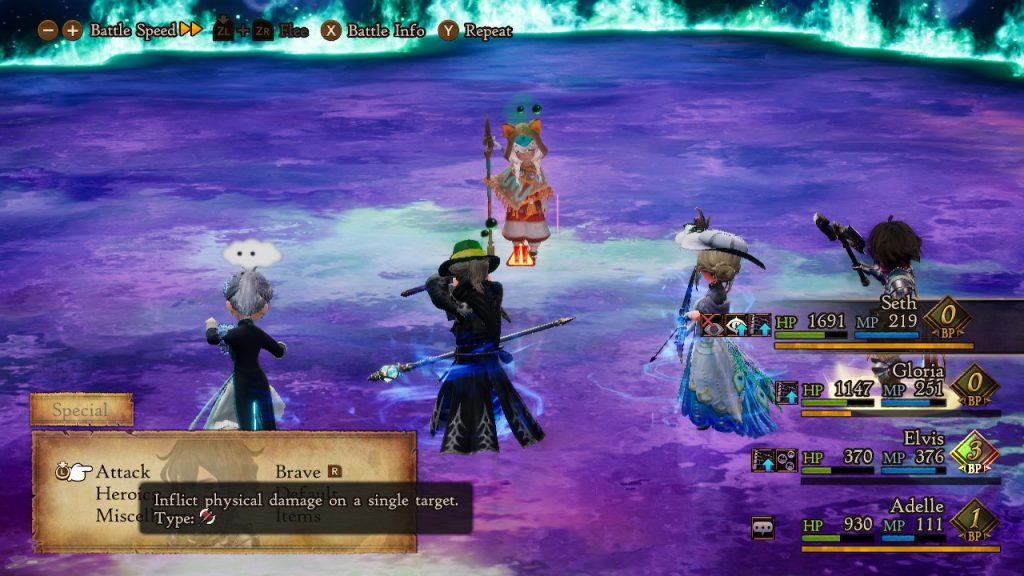
Revo happens to be the creator of Linked Horizon, who performed the first, second, third, and fifth opening themes (as well as the fourth ending theme) for a little anime known as “Attack on Titan.”
With such an amazing resume under his belt, it’s easy to see why the soundtrack for Bravely Default II is so amazing, and can even be up there alongside the soundtrack of Square Enix’s other series, such as Final Fantasy.
Gameplay
The game is quite straightforward. It’s a turn based strategy, much like Final Fantasy. The game features Asterisks, which when collected, allows the player to change the jobs of the characters. And of course, the “Brave Point” system.
Brave Point system
The Brave Point system allows you to use the Default command, which forgoes your turn to reduce incoming damage until the next turn while also increasing your Brave Point (BP) by one.
Using the Brave command allows a character to perform multiple actions in one turn, provided they have enough BP saved up.

A basic strategy is to Default to build up BP and mitigate damage, then perform multiple turns to deal damage and recover any lost health. With all the abilities and builds in the game, there are countless of possible strategies the player can concoct.
Equipment
An important aspect to the game is equipment, and in Bravely Default II, a weight system has been implemented.
Each piece of equipment possesses a certain weight and each character has a weight limit. The character’s weight limit increases by 1 for each level they acquire, plus a multiplier based on their job.

If the equipped loadout exceeds the character’s weight limit, then that character will suffer reduced stats. While the weight system can be frustrating to deal with at first, it helps in keeping the game balanced, and I personally didn’t mind it too much, as it forced me to be more diverse in my builds.
Active Time Battle (ATB)
Bravely Default II uses an ATB battle system, but is still turn based. This means that it is not a round-based combat where you select every one’s commands for the turn, and then everyone acts depending on their speed.
A character’s turn frequency is determined by their speed factors and abilities. You will see the ATB bar on each of your characters and when it fills up, you can select the commands for that character.
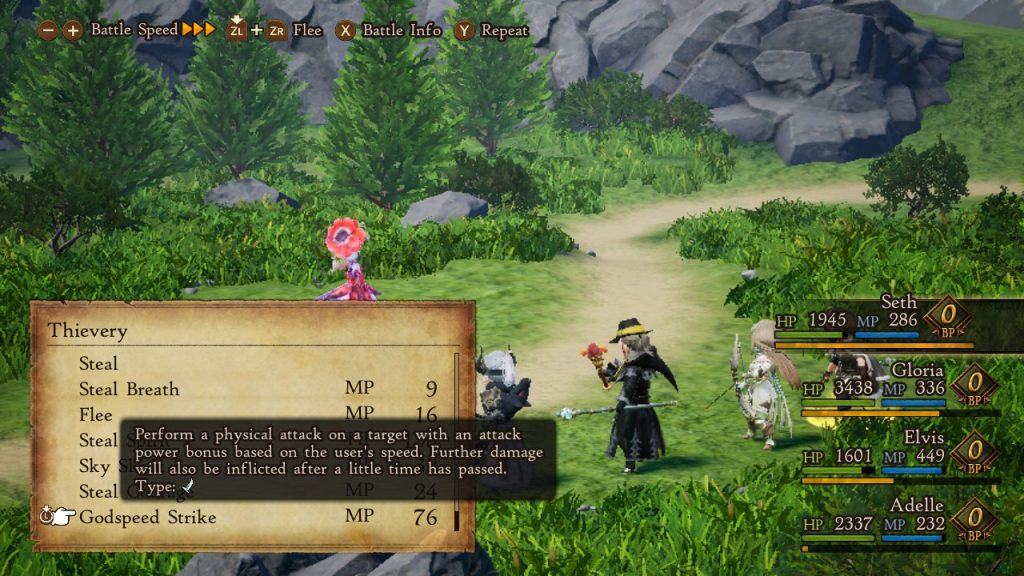
This means that if one of them has a job and equipment loadout that reduces their speed or performs an ability that delays their next action, certain enemies could perform multiple turns before that character is able to act again.
I found that using this system made for a more interesting game than made it feel different from traditional JRPGs, and it makes for some creative interactions.
For example, if a boss has a high turn rate, they can take actions more often, but it also means that they take poison damage every time their turn comes, which makes the poison status stronger against faster enemies.
Grinding
I found the gameplay incredibly fun, but also grindy. Grinding wasn’t a problem for me, since I don’t mind it as much, but if you dislike it, it may not be the game for you.
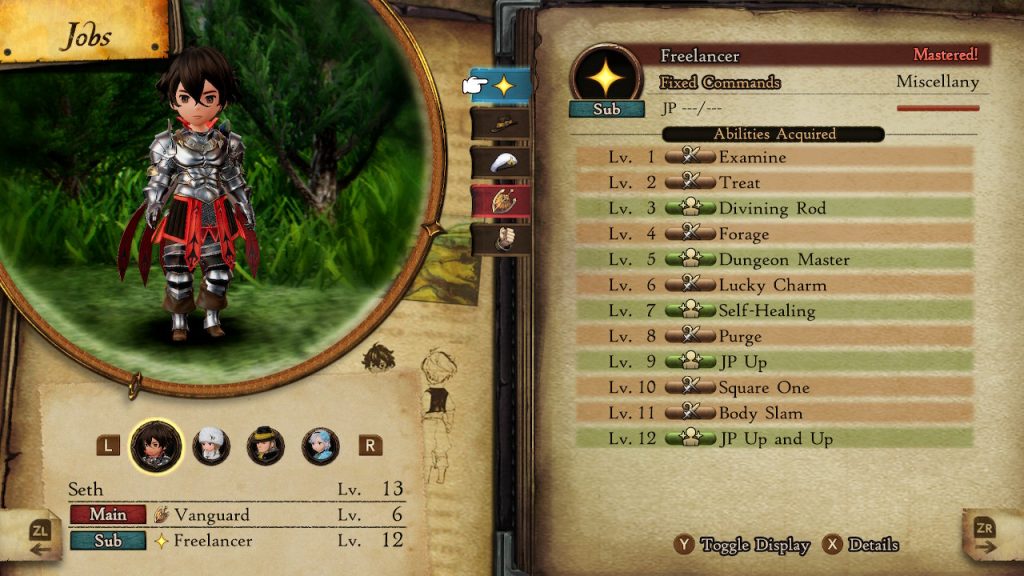
Most of the grinding goes towards increasing your job levels, since that’s how you unlock its abilities. If you’re like me and want to max out every job upon unlocking them, you’ll end up overleveled. It may not be a problem if you set the game to hard difficulty, which can be done at any time.
Jobs
It is, however, satisfying unlocking all of a job’s abilities, as the versatility and amount of options you have allows you to be creative. You can have a main sub and assign a sub-job to each person. The main job affects that character’s stats and gives up to two Specialities, which are like passives unique to that job.
The sub-job allows a character to use the active abilities of that job while still fully benefiting from their main job.
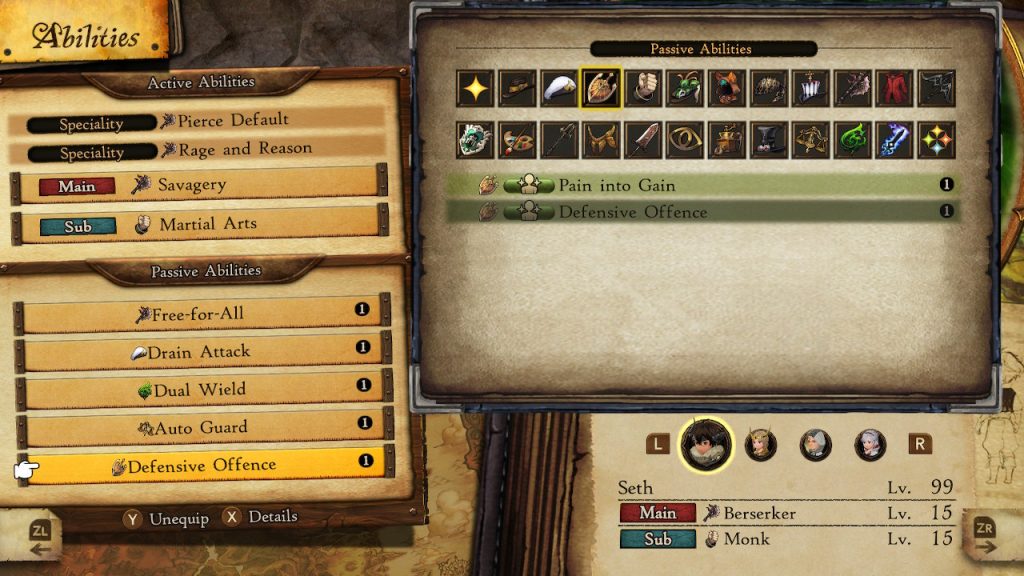
Additionally, each character has 5 slots for passive abilities. Unlike Specialities, any passive abilities can be assigned to that character regardless of their main job, as long as that particular passive ability is unlocked and the character has enough slots for it.
Gameplay criticisms
Although the gameplay really shines, there are a number of issues with it. The weird part about these problems, however, is that upon further analysis, you can find reasons to justify most of them.
In other words, there are mechanics added in that can make the game a little frustrating, but at the same time, you have many tools and options available to you that you would otherwise be quite overpowered without the advantages the enemies have.
One of the problems I noticed is that you are given a multitude of possibilities for builds, yet in many cases, you’re pigeonholed into using certain strategies because the ones you want to do aren’t viable.
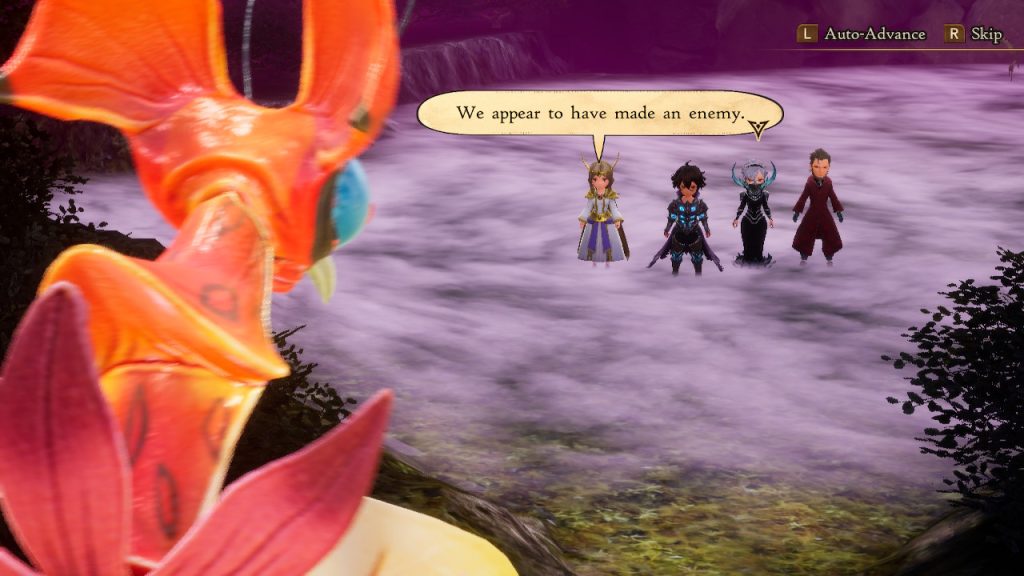
For instance, certain monsters will be a counter whenever a specific type of ability is used. A monster that counters Savagery abilities (abilities of the Berserker job), will be able to take a free action immediately.
This drastically gives the monsters an advantage over anyone using Berserker job abilities, forcing you to not use the job against it.
It’s a milder issue than it sounds, since you can still use those abilities that the monster counters; it will just be more annoying to fight them. But it would be a lot less frustrating if there was a way of informing the player of these.
A useful feature would have been adding a monster’s counters to the examine info alongside their weaknesses and resistances.
Features
There are useful features in the game, though there are also some that are either missing or could have been added that would have significantly improved the experience.
Exploration
First off, there’s Exploration. By talking to an old woman that you saved near the beginning of the game, you can send out a ship to search for treasure. These treasures include money, experience and JP orbs (which grant experience or Job Points), and buns (which permanently increase certain stats).
Each Exploration session can go up to a maximum of 12 hours, but it can be ended earlier. The longer you send it out, the more rewards you will receive. Higher quality rewards will be given if you keep the online function on so your ship can “interact” with other players.

However, there’s a caveat: the Exploration timer only goes up while the Nintendo Switch is in sleep mode while Bravely Default II is still running. So, Exploration is more of a way to give something to players who don’t have as much time to play the game.
While the amount of rewards you get for the time spent while in sleep mode (12 hours of Exploration will only net you around a handful of rewards), it’s still not something to complain about as it’s literally something that’s freely given and not meant to be a replacement for actually playing the game.
Auto-equip, but lack of saving loadouts
The game features an auto-equip function in the equipment screens that simply equip the character based on what the game thinks is best, but in my opinion, a feature that allows you to save equipment loadouts–that also save the main job, sub-job, and passive abilities equipped–would have been much better.
I found that I spent a lot of time re-equipping a build I had come up with because I needed to switch that character to a different job to level it up, but then found myself forgetting the exact loadout for that character.
Overworld encounters
Random encounters have been forgoed in favour of overworld encounters. Think of Pokémon Let’s Go: Pikachu/Eevee. You see the monsters on the surface and if you run into them (or they run into you), a battle triggers.
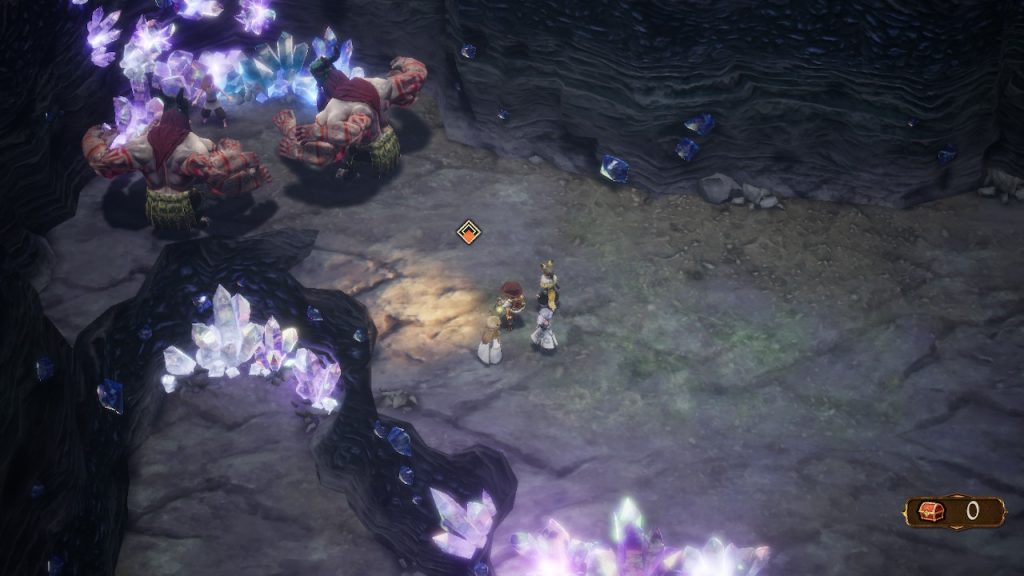
I’m not a fan of this change, as I would much rather have random encounters, but with an option to remove them. This makes grinding for experience more tedious, especially since if you reach a level relatively higher than the mob you’re farming, they will run away from you. This can, however, be dealt with using Monster Treats.
Monster treats
Monster Treats are a way of luring monsters to you while also “chaining” encounters in order to receive a multiplier for the amount of JP you earn at the end of a battle. When a Monster Treat is activated, monsters of that family type will run towards you, and if you enter a battle with multiple monsters near you, you will trigger a chain battle, where if you defeat the monsters, a new set of monsters will take over immediately.
While this is useful for power levelling, as you gain a JP multiplier the more battles you chain together, I found it quite tedious and too much of a chore to try to lure monsters in a clump together. Also, Monster Treats are very uncommon, and it’s not easily farmable until later in the game when you can buy them.
Lack of traditional toggle for experience or JP gain
A huge feature that’s missing is the ability to turn off experience or JP gain. Instead, they are locked behind two accessories that a character must equip: one for 0 experience gain and another for 0 JP gain.
The decision to move such features from a menu setting to equipment is puzzling to say the least, even more so considering that they are acquired quite late into the game’s story.
While this won’t affect those who intend to play the game casually, this means that players who wanted to attempt a no experience run can’t do so unless they start a New Game+ and carry over the accessories that prevent the experience and/or JP gains.
New Game+
Finally, there’s the New Game+ feature, which is actually really well implemented. After finishing the game, you can load your completed save file to start a New Game+.
You will be prompted with what you wish to carry over, giving you complete freedom over what aspects will be brought over and which will not.

Even seemingly trivial elements such as hours played can be carried over and this is important because there is a Job in the game that makes use of the number of hours played for one of its abilities.
This gives the game higher replay value, and you can experiment with different builds that you now have access to at the beginning of the game instead of having to unlock them in your second playthrough.
Missing content
There are also some features in the game that make it obvious that content has been cut from the game. For instance, there are abilities that you learn that allow you to cut trees or smash rocks in the overworld.

However, cutting trees is only really used in one instance, where it blocks a path to a treasure chest, while smashing rocks wasn’t used at all outside of the one instance where you learn how to do it.
It’s clear, even without reading up on developer interviews and comments, that planned content is missing from the game.
Conclusion
Overall, Bravely Default II is a satisfying follow up to the Bravely Default series, but it could have benefited greatly from a delay instead of cutting content.
But for what we are given, it’s well worth playing the game, especially for JRPG fans. Some of the changes may not click with people and some may be frustrating, but the game is still overall a fun experience.
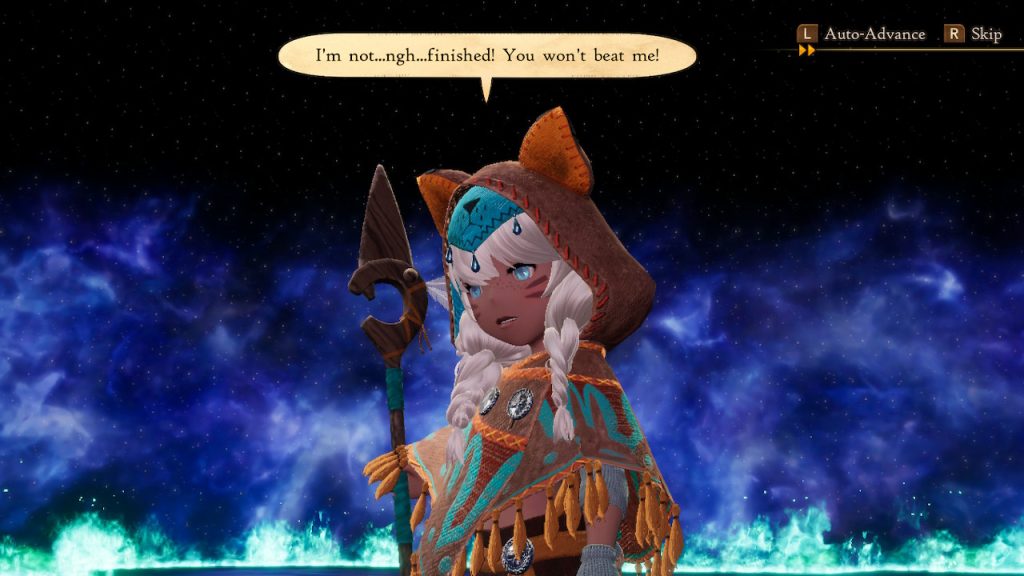
There is quite a lot of grinding to do in order to unlock all the Job abilities, so it may turn off some players, since Bravely Default II doesn’t really respect those who don’t have a lot of free time.
Regardless, Bravely Default II is a great JRPG, though fans of the previous games may feel it does not live up to the series name. It is courageous in the many changes to differentiate itself from the previous games, but while some of them work well, others don’t as much.
We hope you enjoyed this Bravely Default II review.

